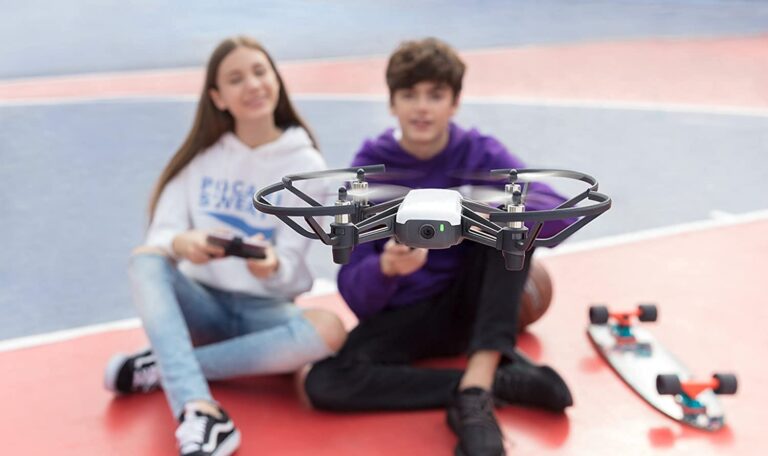Drones are entertaining, but they are not typically informative. The Ryze Tech Tello ($99) aspires to be both by letting you control the drone via an app or an additional Bluetooth controller. Scratch, an open-source programming language designed by MIT, may also be used to program the drone. This simple yet powerful language lets you develop programs by dragging and dropping code blocks, similar to how you would assemble a Lego model. Unfortunately, while the drone is fun and easy to control, the programming might be better.
What will you see here?
Small and Sleek Design
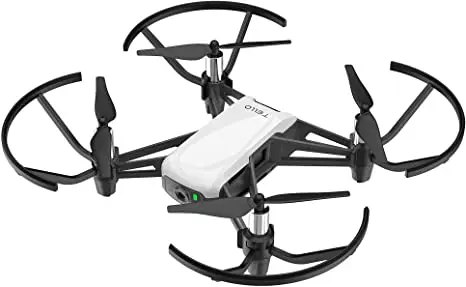
The Ryze Tech Tello Drone is a tiny drone with dimensions of 6 x 6 x 1.3 inches. Because it weighs less than 3 ounces, it does not require FAA registration. The battery, which slips into the PVC body of the drone and is surrounded by the rotors, accounts for the majority of the weight. These are guarded by prop guards, which safeguard the fast-spinning blades in the event of a collision. However, because they do not entirely cover the blades, the Tello should only be used by individuals who are mature enough to know where their fingertips should not be.
Control of Tello Drone

You can operate Tello in three different ways: via an app, a remote control, or the Scratch programming language. The Tello app is available for both iOS and Android handsets. This has a touch-screen interface for controlling the drone and a preview of the camera’s picture. It’s an easy-to-use application that gives both novices and expert pilots a good amount of control. This app saves photos and videos as follows: There is no storage on the drone itself.
The Tello is also compatible with the $34 Gamesir T1s game controller. This communicates with the smartphone, which transmits orders to the drone. The two analog joysticks on the front of the controller will seem familiar to gamers, and they allow a high degree of precise control over the drone.
Programming using Scratch
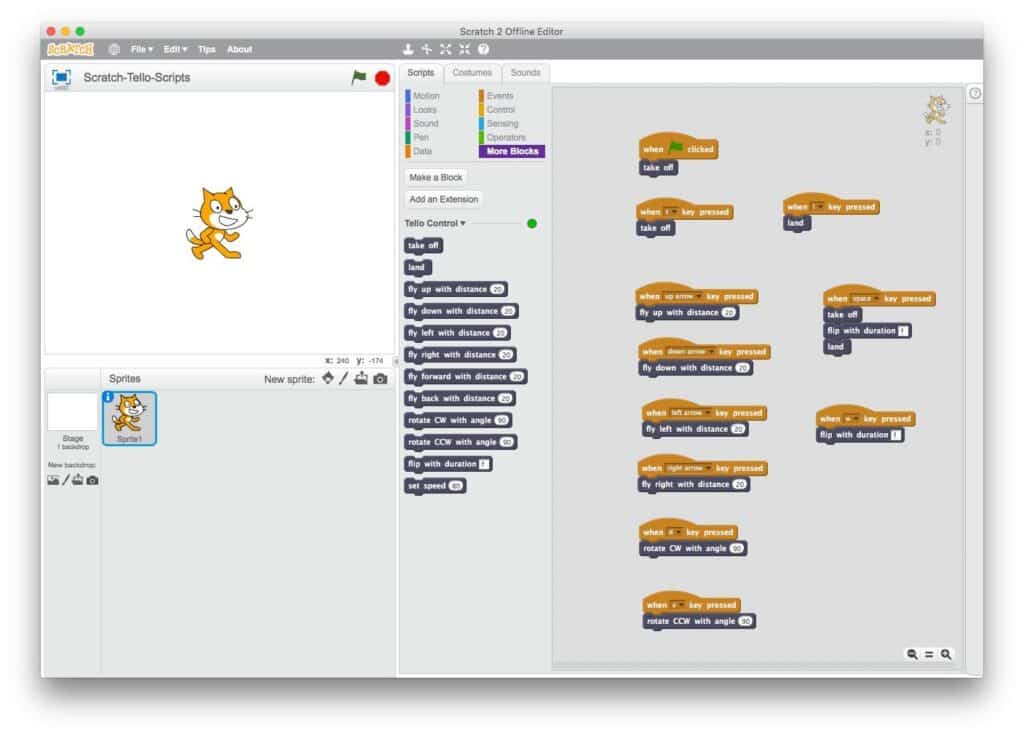
Finally, the Tello may be programmed using the Scratch programming interface. This is more difficult to configure and is only slightly detailed in the one-page manual. To get started, download the offline version of Scratch and Node.js, a JavaScript engine used by Scratch.
The Tello Scratch extensions are then installed, and Node.js is executed to allow Scratch to communicate with the drone. Finally, when you launch Scratch, you must enable these extensions by pressing Shift and choosing File>Enable experimental HTTP extensions. What the manual fails to mention is that you must additionally configure the computer running Scratch to link to the Wi-Fi connection that the drone sets up: the drone cannot connect to your current Wi-Fi network.
Once everything is in place, you may use a sequence of Scratch coding blocks to do actions such as take-off, turn, fly a given distance, or for a specific amount of time in one direction, flip, or land. When combined with the regular Scratch blocks, you can create a basic on-screen remote control, program the drone to take off when the computer detects a sound, and so on.
However, there is no instruction for the Tello Scratch blocks, and there is no way to do more fascinating stuff like take video or photographs, utilize the drone’s camera to respond to the surroundings, or do anything other than fly around a bit.
That all sounds like a lot of trouble for a small reward, and you’d be correct. Scratch control over the Tello is unfinished, poorly documented, and gives only a limited level of control.
The Parrot Mambo, on the other hand, may be programmed in a variety of computer languages, including Swift, Tynker, Workbench, Simulink, Python, and Javascript.
Flying of Tello Drone
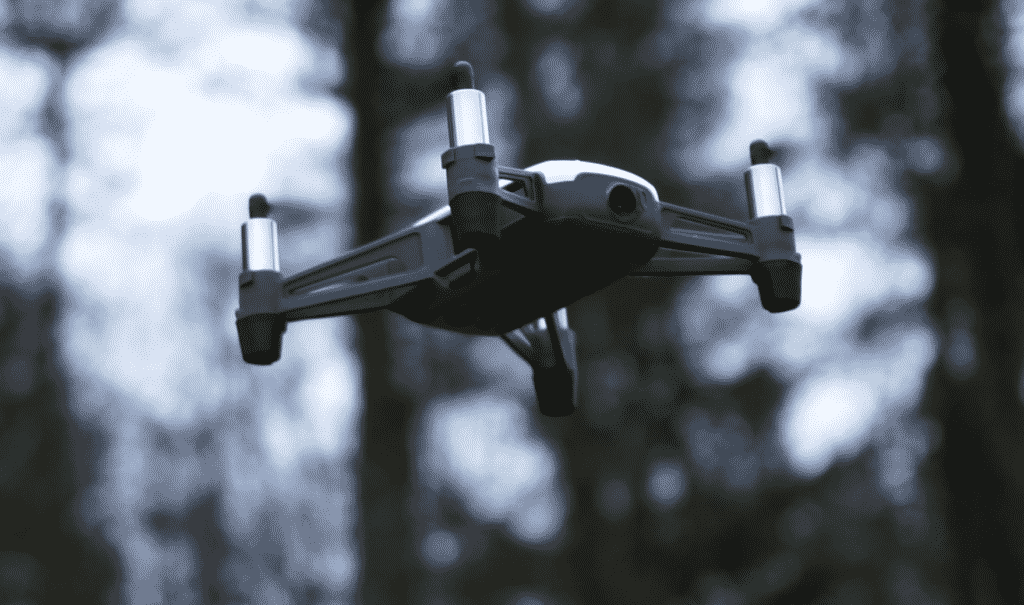
The Tello is a quick, nimble drone that travels at a startling pace for its size. In rapid flying mode, It speeds at a brisk 20 mph, and it could stop and turn at approximately 6 feet. The slower speed option reduces this to a more bearable 8 mph, and you should keep it there until you get used to it.
Simply place the drone on a level surface, click the takeoff button, and slide the on-screen verification. The drone then powers up, takes off, and hovers about 5 feet off the ground. You can also choose to employ the Throw & Go mode. Here, you enable the mode, then launch the drone into the air, where the motors will start and it will hover in position.
You can engage in numerous entertaining flying modes via the app, including 8D flips, Up & Away, 360, Circle, and Bounce Mode. 8D flip is an acrobatic mode in which the drone spins in one of eight directions by swiping the on-screen. Up & Away is a video that catches the drone flying up and away from you. The 360 mode takes video as the drone gradually rotates in position, and the Circle mode records a brief video while the drone circles around the target while keeping the camera aimed at it.
Because there is no GPS on this drone, you cannot preset a path and instruct the drone to track it via the smartphone app. If the drone goes out of the Wi-Fi range, it will hover until it regains connectivity. Although you receive a warning via the smartphone app, the drone does not instantly stop or return to you.
Photos and Video
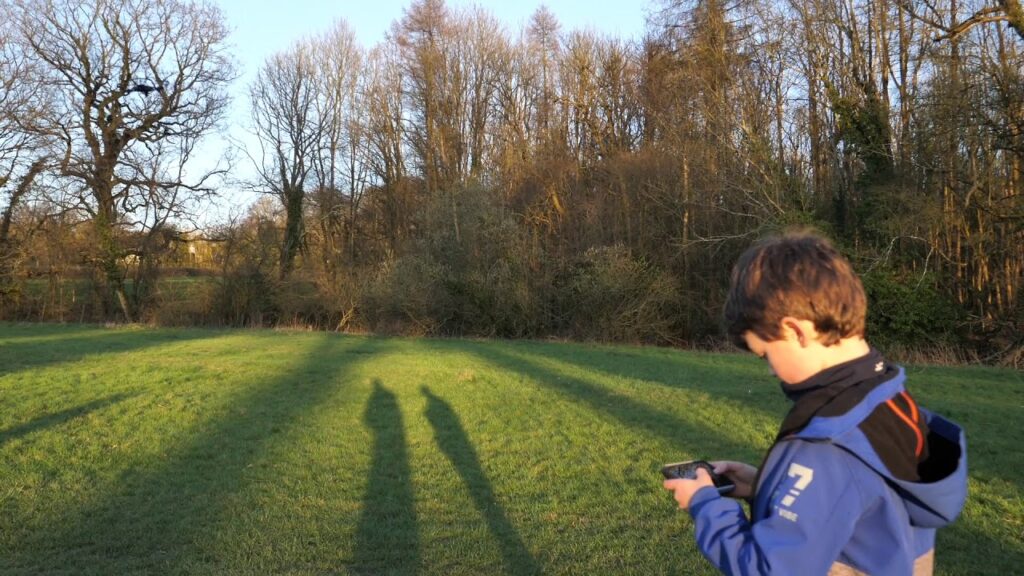
The Ryze Tech Tello Drone shoots 720P video at a quality of 1280 x 720, as well as 5 MP still photos (2592 x 1936). Both are crisp and sharp, with fine detail and natural, vivid colors. When flying over the lawn, the turf retained its original, bright color while revealing the features of the blades.
Battery Life of Tello Drone

The Tello’s 1100 mAh battery gave around 3 to 5 minutes of flying duration. That’s not long – around half the time of the Parrot Mambo. However, if you’re attempting to use the drone’s programmable capabilities, which take longer to get up and running.
Spare batteries are readily accessible and cost $18 apiece. There is also a $24 alternative charger that can recharge four batteries at once. Other spare components are easily available, including various colored shells for $8 and a decent set of rotor blades for $2. The drone comes with one pair of spare rotor blades.
Conclusion
The Ryze Tech Tello Drone is enjoyable to operate, having responsive controls that are suitable for both novice and expert pilots. The app is easy to use and takes good video. But if you’re looking for a pleasant method to learn to program, this isn’t it: the Scratch compatibility is hacked-together, very restricted, badly explained, and feels like an afterthought.
In this price bracket, Parrot Mambo is preferable, it is as fun to fly but has a longer battery life and more programming choices. The base model is only $60, but it is customizable with a variety of attachments, including first-person spectacles and a 720p camera. However, if you’re searching for a beginner drone, the Tello is a decent choice.


